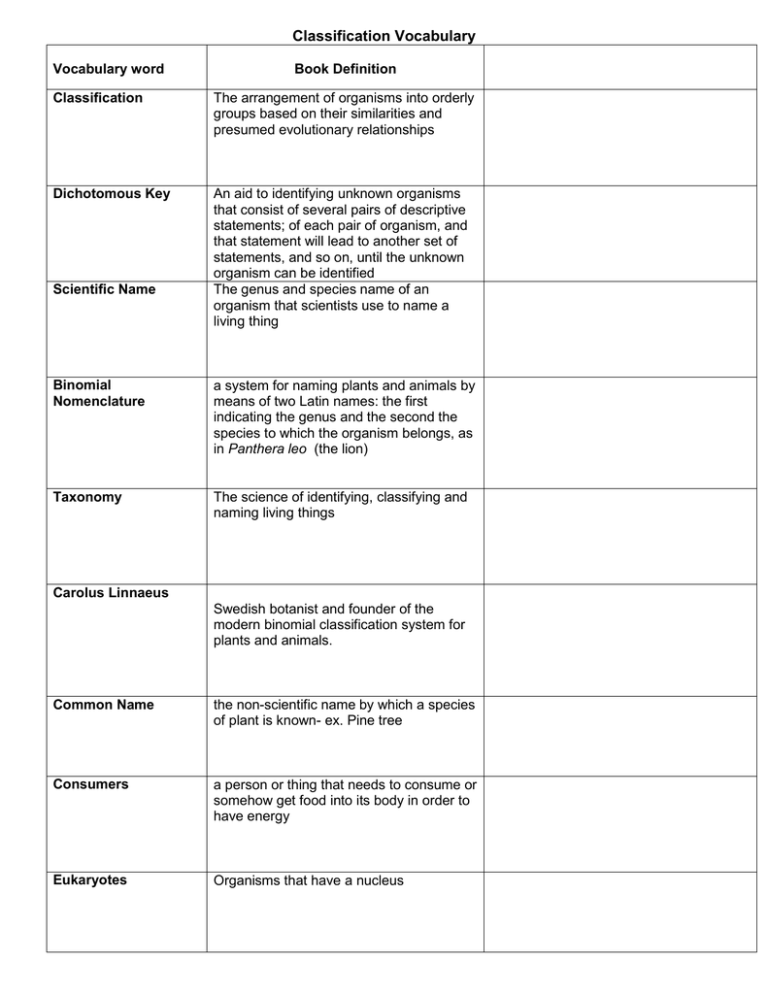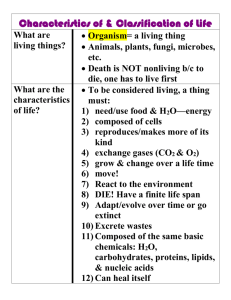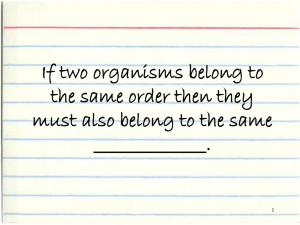Classification Vocabulary List: Biology Terms Defined
advertisement

Classification Vocabulary Vocabulary word Book Definition Classification The arrangement of organisms into orderly groups based on their similarities and presumed evolutionary relationships Dichotomous Key An aid to identifying unknown organisms that consist of several pairs of descriptive statements; of each pair of organism, and that statement will lead to another set of statements, and so on, until the unknown organism can be identified The genus and species name of an organism that scientists use to name a living thing Scientific Name Binomial Nomenclature a system for naming plants and animals by means of two Latin names: the first indicating the genus and the second the species to which the organism belongs, as in Panthera leo (the lion) Taxonomy The science of identifying, classifying and naming living things Carolus Linnaeus Swedish botanist and founder of the modern binomial classification system for plants and animals. Common Name the non-scientific name by which a species of plant is known- ex. Pine tree Consumers a person or thing that needs to consume or somehow get food into its body in order to have energy Eukaryotes Organisms that have a nucleus Decomposer organisms that break down the dead or decaying organisms Multicellular composed of several or many cells. Prokaryotes any cellular organism that has no nucleus Producers Living things that make their own food through photosynthesis Unicellular One cell Animal The classification kingdom containing complex, multicellular organisms that lack ell walls, are usually able to move around, and possess nervous systems that help them be aware of and react to their surroundings. Archaebacteria A classification kingdom containing bacteria that thrive in extreme environments Eubacteria A classification kingdom containing mostly free-living bacteria found in many varied environments Protista A kingdom of eukaryotic single-cell or simple, multicellular organisms; kingdom Protista contains all eukaryotes that are not plant, animals, or fungi Plant The kingdom that contains plants-complex, multicellular organisms that are usually green and use the sun’s energy to make sugar by photosynthesis Fungus A kingdom of complex organisms that obtain food by breaking down other substances in their surroundings and absorbing the nutrients





